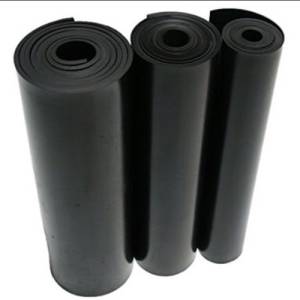Description
Nitrile Rubber: Superior Performance and Versatility
Nitrile rubber, also known as NBR (Nitrile Butadiene Rubber), is a synthetic elastomer renowned for its exceptional resistance to oils, fuels, and a wide range of chemicals. This makes it a superior choice for a vast array of applications demanding durability and leak-proof performance. Its unique properties make it a versatile material used across numerous industries.
Key Properties and Benefits:
- Excellent Oil and Fuel Resistance: Nitrile rubber's primary advantage lies in its exceptional resistance to oils, greases, fuels, and many other petroleum-based products. This resistance far surpasses that of natural rubber or other synthetic rubbers like neoprene. The level of resistance is directly related to the acrylonitrile content; higher acrylonitrile percentages translate to greater oil resistance.
- Chemical Resistance: While its oil resistance is paramount, nitrile rubber also exhibits good resistance to a variety of chemicals, including certain acids, alkalis, and solvents. However, it's crucial to consult specific chemical compatibility charts to ensure suitability for your application.
- Abrasion Resistance: Nitrile rubber possesses good abrasion resistance, meaning it can withstand significant wear and tear, making it ideal for applications involving friction or rubbing.
- Temperature Resistance: Nitrile rubber offers a moderate temperature range performance. While it can withstand low temperatures, its optimal operating temperature range is generally between -30°C and 100°C (-22°F and 212°F), with some specialized compounds extending this range. High temperatures can cause degradation and loss of properties.
- Good Mechanical Strength and Elasticity: Nitrile rubber exhibits good tensile strength and elongation, ensuring it retains its shape and resilience even under stress.
- Versatility in Applications: Its unique combination of properties makes it applicable across various industries, including:
- Automotive: Seals, gaskets, hoses, and belts.
- Aerospace: Seals and gaskets for hydraulic systems.
- Industrial: O-rings, seals, gaskets, and diaphragms.
- Medical: Gloves (especially examination gloves), tubing, and other medical components.
- Food and Beverage: (Specific grades with FDA approvals are needed for food contact).
Different Grades and Specifications:
Nitrile rubber comes in various grades, each tailored to specific needs. These grades differ in:
- Acrylonitrile content: Higher acrylonitrile content translates to higher oil resistance but potentially lower flexibility.
- Hardness (Shore A): Ranges from very soft to very hard, influencing its flexibility and durability.
- Color: Available in various colors, although black is the most common.
- Additives: Various additives can be incorporated to modify properties such as compression set, heat resistance, or flexibility.
Choosing the Right Nitrile Rubber:
The selection of the appropriate nitrile rubber grade depends heavily on the specific application and the chemicals it will be exposed to. Consulting with a materials expert or supplier is highly recommended to ensure the chosen grade meets the required performance specifications.
Conclusion:
Nitrile rubber's excellent combination of oil resistance, chemical resistance, and mechanical properties makes it a highly versatile and reliable material for countless applications. Understanding its key characteristics and available grades is crucial for choosing the right material for optimal performance and longevity.
